Making a Pebble Cave
This guide on how to make your own pebble cave is written by Nick Pavlovski.
A valued member of our forum.
Making a Pebble Cave
This project was inspired by the AquariumLife DIY PVC cave project (http://www.aquariumlife.net/projects/diy-decoration/99.asp), which I came across after perusing the originating article for the Coconut Shell Cave that was trialled here in the Forum midyear (http://www.aquaticcommunity.com=coconut).
I wanted a cave for my Betta, because of the strong water flow from my internal filter. I didn’t want to use PVC piping as I wanted something tall, to accommodate the long fins. A plastic plant pot is an excellent substitute.
Ingredients:
Plastic plant pot, never used, from hardware store
Stanley knife
Old toothbrush
Silicone Sealant for Aquariums
Substrate
Old bucket
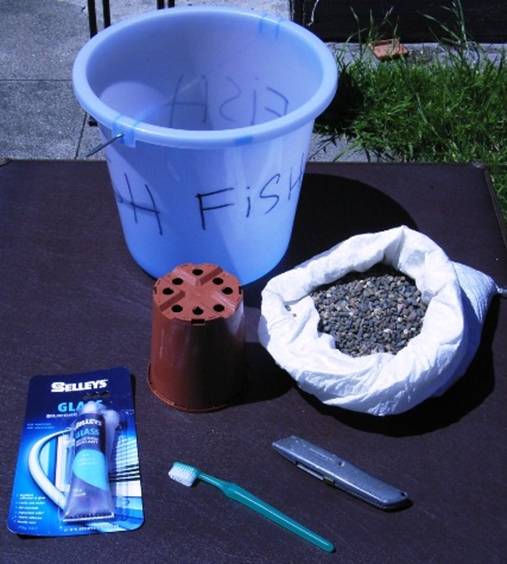
Preparatory step:
Remove any price tags from the plant pot and then give it some good soakings in fresh tap water. I gave it two overnight soakings in a bucket, changing the water each time. That should remove any residual chemicals leftover from the manufacturing process.
Step 1:
Use the Stanley knife to cut the pot. I cut the hardened rim off, made a nice tall cave entrance and cut a little chimney in the roof on the opposite side to the cave entrance.
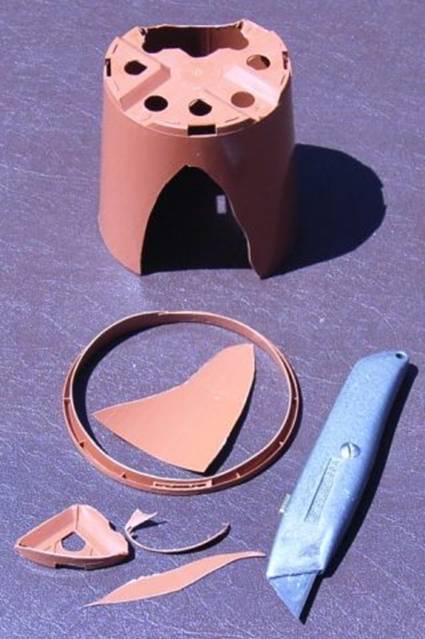
Step 2: Open the silicone and apply it to as much of the pot as you can. Smear it around using the toothbrush so that as much of the surfaces as you can are covered uniformly. Do the same to inside the pot, too.
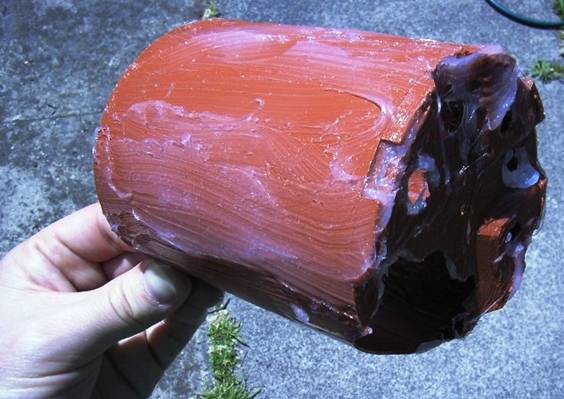
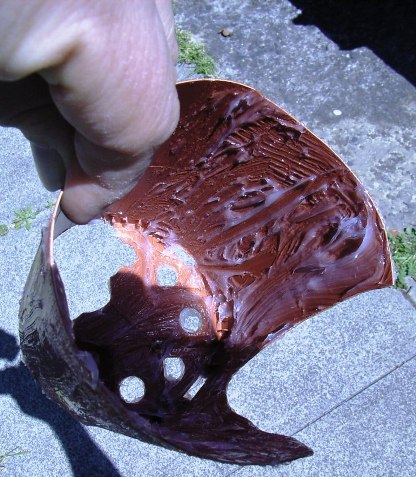
Step 3: Hold the pot in the bucket with one hand (but don’t let it touch the bucket) and with the other hand, pour substrate over the pot, trying to get it to stick to the silicone. Once there is a good enough bed of substrate in the bucket, you can place the pot in the bucket, and pour the substrate over it. Then use your hands to press as much substrate onto the silicone so that as much of the pot is covered with glued-on substrate as possible.
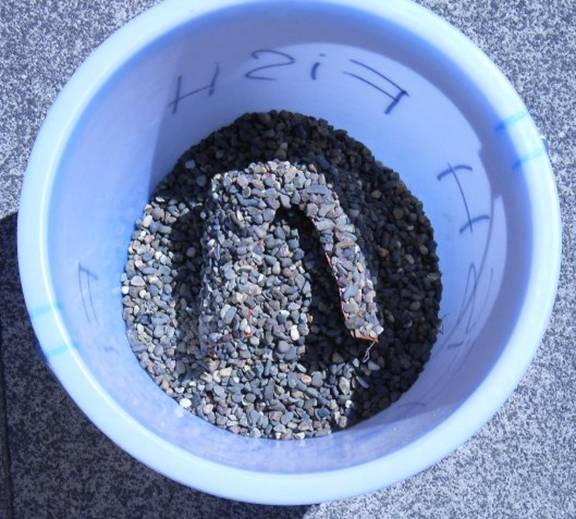
Step 4: Leave for 24 hours so that the silicone hardens.
Step 5: Repeat steps 2-4 for the areas left uncovered.
Step 6: Leave alone in an airy place for the full duration of curing. Selley’s requires a maximum of seven days to fully cure, so seven days it is!
Step 7: Admire your work.
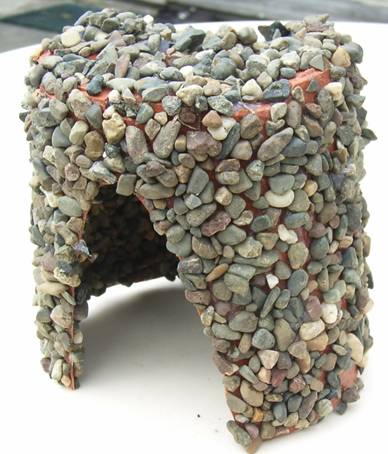
Step 8: Give it a few hours of being rinsed and washed. This is to make sure no remaining toxins are going to harm your fish. Then dry it.
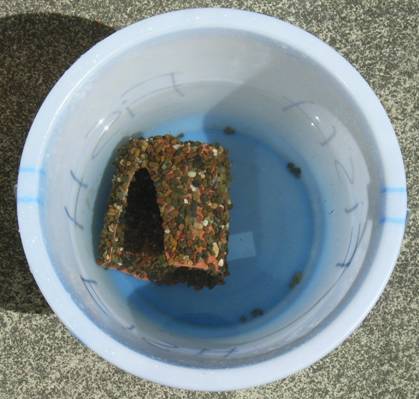
Step 9: On tank-cleaning day, put the pebble cave in as the second-last step.
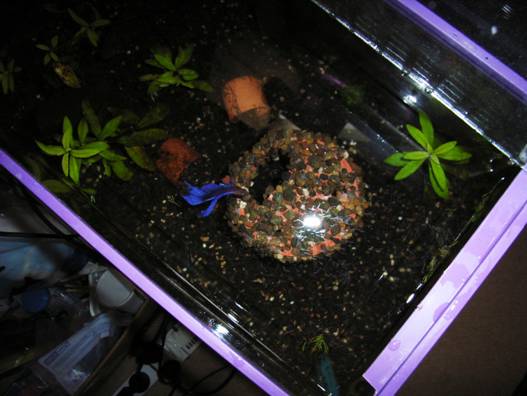
Step 10: Congratulate yourself on a job well done! Watch your friends explore their new home.
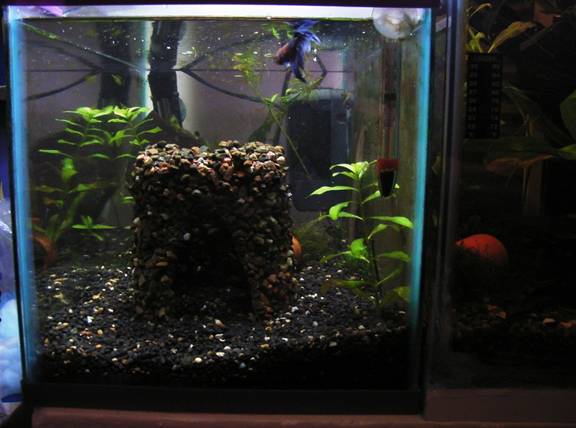
Final comment: Use a really rigid plastic pot, unless you are using very fine substrate. My substrate weighed down the pot a fair bit and caused the walls to buckle a little.
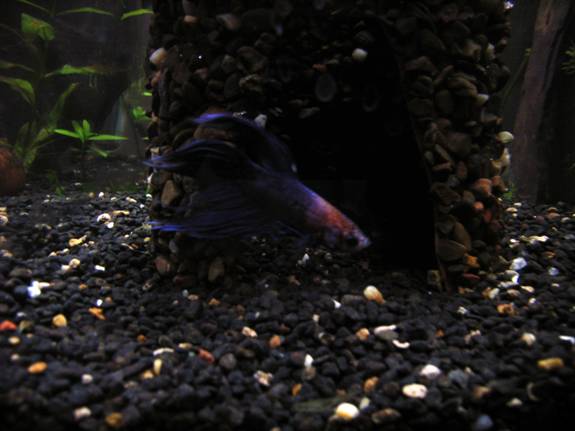
Copyright Nick Pavlovski 2007.
Didn't find the info you were looking for? Ask your question in our Aquarium forum !
Our knowledgeable staff usually responds to any question within 24 hours
Other Aquarium Articles
Aquarium Cycling - A guide on how to cycle your aquarium.
Aquarium Lighting - Learn the basics of aquarium lighting
Breeding Fish - Overview of How To Breed Tropical Fish
Beginner fish - Great Beginner Fish for the Beginner Aquarist
Bad beginner fish - Horrible Beginner Fish for the Beginner Aquarist
The beginners tank - A guide to your fist aquarium
Cleaning your filter - Basic filter management
Carbon and aquariums - Information on the effects of using carbon in your aquarium.
Cycling - A guide to aquarium cycling and how it works.
Don’t trust the staff in the fish store! - A text about why you shouldn't alway trust your fish store.
Dry and Rainy Seasons in the Tank - A detailed account of how to simulate seasons in aquariums
Electrical Safety and Aquariums - How to prevent electrical accidents.
Filtration pro and cons - thoughts about filtration
Fry Growth rate - Thoughts on how to optimize growth in fry.
Fish keeping for beginners - An introduction for beginners.
Aquarium Filtration- Llists and describes the different methods of aquarium filtration, and then discusses their benefits and drawbacks.
Finding the Triggers - Information about how to find breeding triggers in different fihs species.
Fry Savers - Information about fry savers and how to construct fry savers.
How to Buy Healthy Fish - A gew tips on choosing healthy fish.
Making a Pebble Cave - A guide on how to make your own pebble cave for your fish.
Modifying Water Chemistry - A technical article about modifying hardness, alkalinity and pH.
Optimizing Growth of Fishes - The factors affecting fish growth - some may be manipulated, others not.
Setting up a tropical freshwater aquarium - Detailed guide on how to setup a freshwater aquarium..
Reverse Osmosis and aquariums - RO is a way to get very pure water in which fish such as dicus and neon tetras can breed and raise their fry.
Safe Rock and Wood Aquascaping - How to make sure that the materials you use in your aquascaping are aquarium safe.
Selecting Community Tank Fish - A guide that will help you choose the right fish for you based on tank size and experience level.
Setting Up A New Aquarium - Help beginners setup their first aquarium
Slime coat - Protecting your fishes vital slime coat
Snails in Aquariums - The biology of snails. Their advantages and disadvantages in an aquarium. How to keep them in check.
Amazon Biotope Aquarium - How to set-up, stock and maintain an aquarium that replicates the Amazon watershed.
Wall mounted aquariums - Information about Wall mounted aquariums
Water chemistry in the aquarium - Hardness, alkalinity and pH are discussed technically, from a chemistry point of view.
Water Chillers - Introduction to water chillers.
